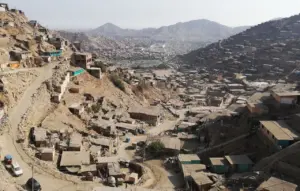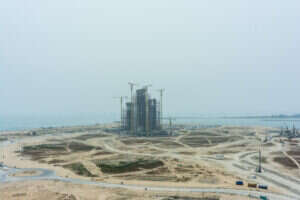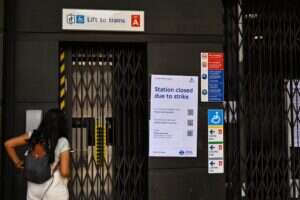In 2008, a resident of Llangynog, a village in South Wales, paid his cash-strapped council £295 to turn on 16 streetlights in his village for an extra six months of the year. This story makes two points. Firstly, streetlights can be costly to run, and can seem like a luxury on council budget sheets. And second, to residents, they are more like a necessity.
It’s unlikely that any city will start turning off its streetlights as Llangynog did, of course: there are enough people around to justify night lights all year round. But a new streetlight technology could cut cities’ electricity bills, and make them greener at the same time.
Dutch architect Daan Roosegaarde is collaborating with Aleander Krivevsky, the founder of tech company Bioglow, to develop “biolumescent” structures, which use plants injected with glowing biomaterials to create streetlights. The plan is to use small, leafy plants on a large structure, to create the appearance of a glowing tree:

Image: Roosegaarde Studio.
Bioluminescent technology, first developed by Cambridge scientists by extracting genetic material from fireflies and bacteria, could be used for street lighting in other ways, too. Roosegaarde’s studio is working on a glowing “biological paint” extracted from mushrooms that could be painted onto trees. And in France, biochemist Pierre Calleja is developing street lights made with naturally glowing algae – although admittedly, these are a little less pretty than the glowing pseudo-trees:

Image: Pierre Calleja.
It’s not clear whether any of these bio-lights will be bright enough to replace streetlights altogether, especially on motorways or main roads. But they could work as a compromise for areas that may otherwise have no lighting at all for parts of the year – and could save one Llangynog resident a hefty sum.






